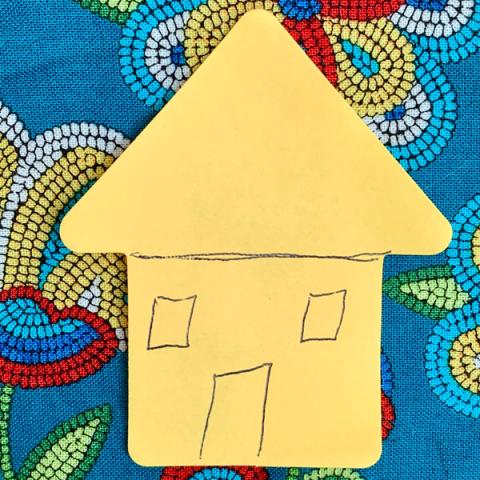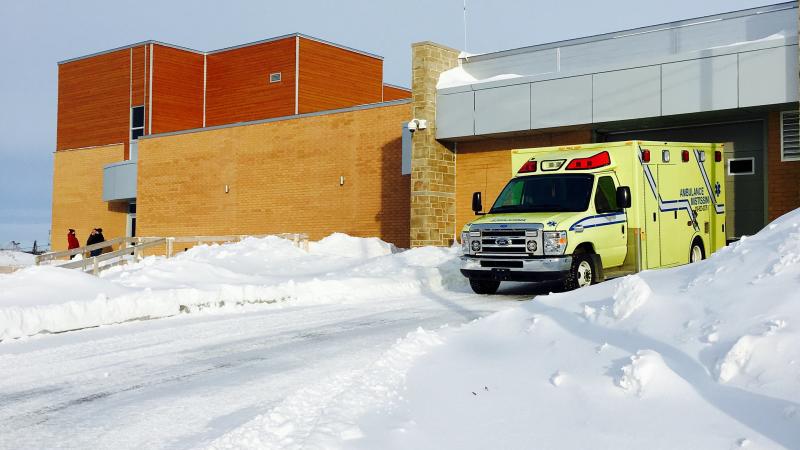Emergency planning: How to prepare your Family Emergency Plan
Instructions on how to create your Family Emergency Plan
VIDEO: Making a Family Emergency Plan (canada.ca)
(A view of forest fire on a mountain)
(Music starts)
Disasters can strike at any time.
(A yellow circle with a fire symbol appears in the middle of the screen)
Often without warning.
(A clipboard holding a piece of paper outlining an emergency plan.)
The best way to help ensure your family or household's safety in any of these situations is to have an emergency plan.
(ON SCREEN TEXT: Three different emergency situations.)
In this video, we will look at three different emergency situations.
(The number 1 appears in a small yellow circle. An icon of a house, a rain cloud, a tree, and flowing water appear in an orange circle.)
In the first, flooding threatens your home while you and the members of your household are not there.
(One of the water waves turns into a string of dashed lines that spread around the screen and end in X's.)
(A yellow circle appears over the dashed lines with an icon of a phone sending a message and a location pin.)
If going home isn't possible, you'll need a simple way to contact and meet one another.
(A photograph of a secondary school.)
Decide in advance on a safe place to meet like a community centre, library, or school.
(Three yellow circles appear on screen. The left is an outline of a cellphone with messages coming out of the screen. The middle is a laptop with an envelope on the screen. The one on the right has the Twitter, Facebook, and Instagram logos.)
If possible, use non-voice channels like text messaging, email, or social media, as these use less bandwidth than voice communications and may work even when phone service has been disrupted.
(The three circles merge into one circle with an outline of a phone in the middle.)
If you must use a phone, keep your conversation brief, and convey only vital information.
(A photograph of an elementary school classroom with chairs, desks, and a board covered in children's artwork.)
If you have children, know the school or daycare's emergency policies — and make sure you share the name of a designated person to pick them up in case you cannot.
(A photograph of two parents talking to their young daughter.)
(An orange circle appears to the left of the screen with an icon of a stack of paper in it.)
Be honest and straight-forward when talking to your kids about emergencies and include them in the creation of your emergency plan.
(The orange circle with the paper icon moves to the middle of the screen where three rows of circles appear. Some circles have an emergency plan in a clipboard. Others have icons of stacks of paper. Others have icons of phones that read 911 beside them. The top and bottom row of circles scroll to the right of the screen and the middle row scrolls to the left.)
Teach them their basic contact information in case they get separated from you. Make sure that they know who to call if they need help, like 9-1-1, your local emergency number, or another trusted adult.
(All the circles disappear until there is one that has an icon of a stack of paper.)
(The number 2 appears in a small yellow circle. An icon of a rain cloud with lightning striking and rain pouring, and a gust of wind appear in an orange circle.)
In our second situation, you are together at home when a severe storm occurs.
(Three circles appear. The circle on the left has an image of a wind-up radio. The middle circle has an image of a television. The circle on the right has an image of a laptop.)
In this case, listen to the radio or television, or go online for information from local authorities.
(An image of a hand hovering over a breaker switch.)
Follow their instructions. They may advise you to turn utilities off or leave them connected.
(Two circles appear in the middle of the screen. The circle above is a plug with a long cord. The circle below is a plug with a short cord. The circles go to the corners of the screen and two more circles appear. The one above is a water jug. The one below is a trash bin. The circles go to the corners of the screen and two more appear. The one above is a faucet with a drip of water. The one below is a gas pump. Two more circles appear. The one above is a powerline. The one below is a fire extinguisher.)
It's important that everyone in the household know the location of your home's various utility components and fire extinguishers, as well as how they work.
(Emergency items appear – images of a radio, a blanket, water bottles, a first aid kit, a flashlight, cans of food, a fire extinguisher, an electric lamp, medicine, and a utility knife.)
Each family member should also know the location of your household emergency kits.
(The number 3 appears in a small yellow circle. An aerial view of a forest fire appears.)
In our third situation, a powerful wildfire is approaching, and you are advised to evacuate.
(Orange circles appear on the screen. In the middle of the circle is an icon of a building with location pins sticking out of the front door and roof.)
Everyone should know your home's safe exits and meeting places, and the location of your grab-and-go emergency kits.
(Three circles appear. The one on the left is an icon of a cat. The one in the middle is an icon of a fish diving into a fishbowl. The one on the right is an icon of a dog.)
Identify kennels or friends' homes where your pets can be taken in an emergency.
(An image of a woman in glasses looking out a window.)
Elderly family members or those with limited abilities or special needs should also be a part of your plan.
(ON SCREEN TEXT: List the medications & supplies they may need in the event of an evacuation. A large icon of a pill appears.)
List the medications and supplies they may need in the event of an evacuation and any information caregivers will require. If they live alone arrange for a friend or neighbour to check in on them or help them evacuate.
(An image of a Canadian passport and an image of an Ontario driver's license. The passport and driver's license duplicates. Two location pins appear to the left and right of the pieces of identification.)
Make sure you have easy access to essential documents and pictures of your household members. Keep copies of birth certificates, passports, wills, and insurance information in a safe location that is easy to get to.
(Three yellow circles appear. On the left is an icon of a scientist. The middle is an icon of a construction worker. The right is an icon of a healthcare worker.)
Having a plan is also part of being a responsible community member.
(A fire truck and a police cruiser with their hazard lights flaring.)
Local authorities will react as quickly as they can, but they can't reach everyone at once. Being prepared allows first responders to help those in urgent need first.
(A circle with an icon of a house, an icon of a raincloud, and an icon of a tree. More circles appear with different emergency icons in them.)
Learn about the emergencies that could happen where you live and plan for situations that are more likely to occur.
(An image of a stopwatch.)
So, do your part! Take 20 minutes and create your household emergency plan today.
(A family of four standing in front of their house outside. A yellow circle in the bottom left corner has an image of clipboard with an emergency plan clipped to it.)
With a little preparation, you can be ready for anything!
(ON SCREEN TEXT: Get started at GetPrepared.ca)
Get started at Getprepared.ca.
(Government of Canada wordmark)
By definition, emergencies happen when we don't expect them, and often when families are not together. Suddenly, you need to think about your kids at school or elderly parents across town. If phones don't work, or some neighbourhoods aren't accessible, what will you do?
To get started, let's look at one of three scenarios.

Scenario 1: You and your family are separated
In an emergency, you'll need a simple way to contact and meet one another if going home isn't possible. Decide, in advance, on a safe place to meet like a community centre or school.
The phone can help too. Long distance calls may work better than local ones, so select a couple of out-of-town contacts who can help your family communicate and find each other. Let them know about your plan and how they can help.
Of course, children are a big concern. If they're in school or day care, they will need to be picked-up. Know the school and daycare's emergency policies and if you can't pick up the kids, designate someone who can.
And talk to your kids about your Family Emergency Plan. Teach them basic personal information so they can identify themselves if they become separated from you and who to call like, your local emergency number, to get help.

Scenario 2: You are together at home
In this case, listen to the radio for information from local authorities and follow their instructions. They may advise to turn utilities off or on so it's important to know the location of your home's water valve, electrical panel, gas valve and floor drain. Make sure everyone also knows the location of your family emergency kit and fire extinguisher.

Scenario 3: You have to evacuate
Everyone should know your home's safe exits and best places to go. And remember your pets, who may not be allowed in shelters or hotels. Identify kennels or friends' homes where they can go in an emergency.
Elderly family members or those with disabilities or special needs should also be a part of your plan. List the medications and supplies they may need in the event of evacuation and any information care-givers will require. If they live alone, ask a friend or neighbour to check in on them or help them evacuate.
In addition to your plan, documents will help you stay organized. Make copies of birth certificates, passports, wills, and insurance info.
These documents, along with photos of your family members, should be kept at work, or other safe locations.
Having a plan is also part of being a responsible community member
Local authorities will react swiftly, but they can't reach everyone at once. Being prepared allows these responders to help those in urgent need first.
Do your part! Learn about the emergencies that can happen where you live and plan for situations that are more likely to occur.
Take 20 minutes today and create your family emergency plan.
Explore more

Phone numbers to call in a health-related emergency.


